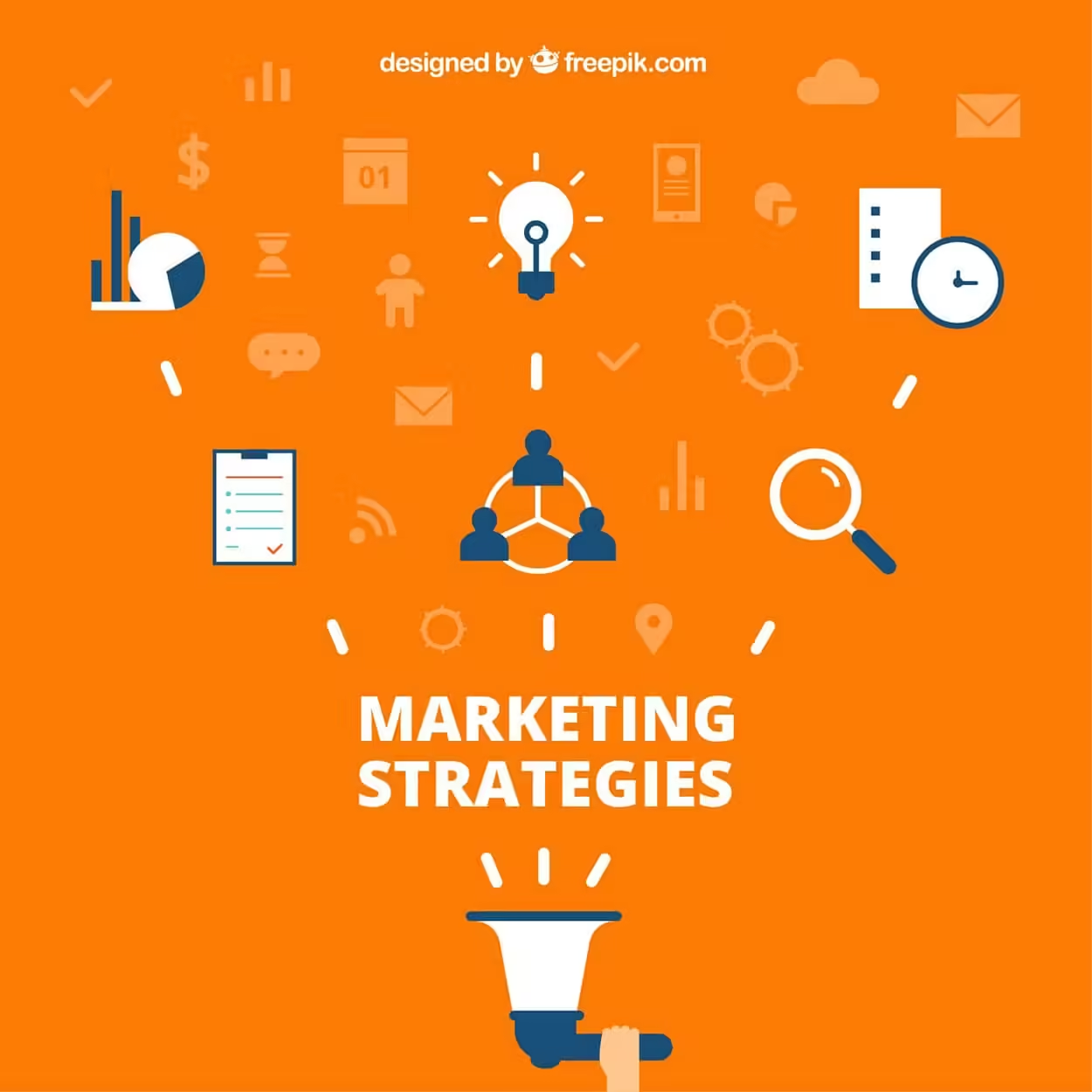Introduction
“How to Start a Business: 13 Important Steps”: You are going to love this article if you are planning to start a new business. Starting a business can be a thrilling and fulfilling journey, yet it necessitates meticulous planning and execution.
Whether you’re starting a small business or a giant corporation, there are a few key measures you should take to improve your chances of success.
How to Start a Business: 13 Important Steps
This article will walk you through the key steps of launching a business, from idea to launch and beyond.
“You must have fire in your belly for success and wealth if you’re planning to start a business—it’s the passion that drives your journey to greatness.”
– Ajay Bhatia
Believe in Your Luck
People will tell you many things about luck, life, and business, but if you go through history, you will understand why luck plays an important role in the success of a business.
“Believe in your luck when starting a business—sometimes the right opportunity appears when you least expect it.”
– Ajay Bhatia
Starting a business is exciting but also challenging. While planning and hard work are essential, sometimes a bit of luck can make a big difference. Believe in your luck—it can bring unexpected opportunities, new connections, or a sudden breakthrough when you least expect it.

Luck might help you meet the right partner or land your first big client. Trust that beneficial things can happen, even if the path is uncertain. By believing in your luck, you stay open to possibilities and are ready to seize them when they come your way. After all, luck favors the brave!
For example, consider the story of Sara Blakely, the founder of Spanx. When she was starting her business, she was lucky enough to meet the right person at the right time—a hosiery mill owner willing to take a chance on her idea, despite rejections from others.
That bit of luck helped her get her product made, and today, Spanx is a billion-dollar brand. Sara believed in her idea and her luck, which played a key role in her success.
Sara Blakely (born February 21, 1971, Clearwater, Florida, U.S.) is an American inventor and entrepreneur who created Spanx, a brand of body-slimming women’s undergarments, and in 2012 became the world’s youngest female self-made billionaire.
Believe in Yourself
Starting a business can be tough, but the most important thing is to believe in yourself. You must have fire in your belly for success and wealth. Confidence in your abilities helps you push through challenges and make your dreams a reality. Trust that you have what it takes to succeed, even when others doubt you.

For example, Walt Disney faced numerous setbacks, including bankruptcies and rejections, but he believed in himself and his vision. That belief kept him going, and today, Disney is one of the most successful entertainment companies in the world. When you believe in yourself, you’re more likely to overcome obstacles and achieve your goals.
Believe in Your Idea
You know that an idea can change your life. When starting a business, it’s important to believe in your ideas. If you’re passionate about it, trust that it can and will succeed, even when others don’t see the potential right away.

Having faith in your idea gives you the strength to push through challenges, stay motivated, and keep improving your product or service. Your belief is what will carry you forward, helping you convince others—whether it’s investors, partners, or customers—to believe in it too.
“Believe in your idea when starting a business; your conviction is the spark that can turn vision into reality.”
– Ajay Bhatia
For example, Steve Jobs believed in the power of personal computers when many people thought they were unnecessary. His strong belief in his idea led to the creation of Apple, now one of the most successful and influential tech companies in the world.
He faced many hurdles but stayed true to his vision. When you believe in your idea, you’re more likely to overcome obstacles and turn your vision into a thriving business.
Conducting Market Research
Understand Your Market
Before beginning any company venture, it is critical to understand your market. Market research is the process of collecting data on your industry, competitors, and potential clients. This step enables you to recognize opportunities and dangers, comprehend market trends, and make sound judgments.

Example: Netflix conducted a significant study on the streaming business before transforming from a DVD rental service to a streaming behemoth. They tailored their offers based on customer preferences and market developments.
Example: Ola undertook considerable market research to better understand Indian consumers’ transportation needs and preferences before launching their ride-hailing service, which effectively competed with Uber in India.
Identifying Your Target Audience
Determine your target audience. Knowing your potential consumers’ demographics, tastes, and purchasing habits will help you design your products or services to fit their demands efficiently. Surveys, focus groups, and online analytics are all useful tools for gaining insights.
Example: Falguni Nayar, the founder of Nykaa, recognized a need in the Indian market for high-quality cosmetic goods. Her market knowledge and enthusiasm for beauty products led her to establish one of India’s largest online beauty shops.
Example: Starbucks identified their target demographic as urban professionals looking for a high-quality coffee experience. This information allowed them to design their stores and menus to appeal to this demographic.
Developing a Business Plan
Creating a Detailed Plan
A business plan is a thorough document that includes your company’s objectives, strategy, and financial projections. It serves as a road map for your company and is critical for recruiting investors and obtaining financing.
Example: Paytm‘s business plan focused on digital payments and financial inclusion, which helped attract significant investment from SoftBank and Alibaba.

Key Components of a Business Plan
- Executive Summary: Provide a concise summary of your business, including mission statement and objectives.
- Market Analysis: Evaluate your industry, market size, and competitive landscape.
- Marketing and sales strategies for attracting and retaining customers.
- Organizational Structure: Learn about your team’s roles.
- Financial projections include revenue predictions, budgets, and funding requirements.
Example: When Ritesh Agarwal founded OYO Rooms, he had a detailed business plan that included financial estimates, marketing goals, and operational strategies. This solid strategy was critical for attracting investors and receiving funding.
Example: Dropbox’s business strategy, for example, emphasized their freemium model and viral potential, both of which were critical in winning venture capital funding.
Choosing a Business Structure
Legal Structures
Choosing the appropriate business structure is critical for legal and tax reasons. Common choices include:
- A sole proprietorship is simple to establish but requires personal liability for business debts. Partnership: Two or more individuals share earnings, losses, and obligations.
- Limited Liability Company (LLC): Provides liability protection and flexibility in management.
- A corporation is a separate legal organization that offers liability protection but requires additional regulations and paperwork.

Example: Infosys began as a private limited business before going public, which provided further growth options
Example: Google began as a partnership between Larry Page and Sergey Brin, before forming a company to preserve their personal assets and encourage growth.
Registering Your Business
Business Name and Registration
Choose a distinct and memorable business name that accurately represents your brand. Once you’ve selected a name, it’s crucial to register it with the appropriate government authorities to guarantee its legal protection.
Example: Nike registered its brand and iconic swoosh logo, both of which are now well-known worldwide.
Example: The Tata Group has registered its brand name and other trademarks, making it one of India’s most known companies.

Obtaining Necessary Licenses and Permits
Depending on your industry and area, you may need multiple licenses and permits to operate legally. Investigate the requirements in your area and ensure that you comply with all legislation.
Example: Uber had to manage various licensing and regulatory requirements in every location where it expanded to guarantee legal compliance.
Example: Reliance Industries, which operates in a variety of industries such as petrochemicals, telecoms, and retail, guarantees that all industry-specific licenses and permissions are in place.
Setting Up Your Finances
Opening a Business Bank Account.
To keep your personal and professional finances distinct, open a business bank account. This will make bookkeeping, tax filing, and financial management more straightforward.
Example: Apple keeps separate accounts for each of its business units to ensure proper financial management and responsibility.
Example: HDFC Bank maintains distinct corporate and personal accounts to provide transparent financial management and accountability.

Accounting Systems
Create a dependable accounting system to monitor your income, expenses, and financial success. Consider employing an accountant or using accounting software to handle your finances more efficiently.
Example: Intuit, the creator of QuickBooks, offers accounting software that millions of businesses use to properly manage their money.
Example: Indian businesses frequently use Tally Solutions’ accounting software to manage their finances effectively.
Developing Your Brand
Creating a Brand Identity
Your brand identity consists of your logo, color scheme, and overall visual aesthetic. It refers to how customers see your business. Invest in professional design services to establish a strong and consistent brand identity.
Example: Coca-Cola, for example, has become one of the world’s most identifiable brands because of its consistent branding, which includes the distinctive red and white color scheme.
Example: Amul, an Indian milk and dairy product giant, is well-known for its strong brand identity and consistent dairy product quality. Their outstanding branding and marketing methods have helped them become a household name in India.

Creating an Online Presence
In today’s digital age, establishing a strong online presence is essential. Create a user-friendly website, employ social media marketing, and consider online advertising to reach a larger audience.
Example: Amazon’s strong online presence and user-friendly website have contributed significantly to its success as an e-commerce behemoth.
Example: Myntra’s strong online presence and user-friendly app have contributed significantly to its success as India’s biggest online apparel store.
Planning Your Marketing Strategy
Identifying Marketing Channels
Choose the best marketing channels for your business. These may include social media, email marketing, content marketing, and traditional advertising. Your decision will be based on your target demographic and budget.
Example: Red Bull reaches their target audience of young, adventurous people using a combination of extreme sports sponsorships, social media, and content marketing.
Example: Patanjali Ayurved, for example, uses a combination of traditional advertising and internet marketing to reach its target audience, promoting its products through Baba Ramdev’s popularity.

Creating a Marketing Plan
Create a complete marketing plan that includes your ideas, techniques, and budget. This plan should include measurable targets and dates so you can track your progress and alter your strategy as needed.
Example: HubSpot’s inbound marketing strategy prioritizes creating excellent content to attract and engage customers, which is critical to their success.
Example: Swiggy, for example, bases its marketing strategy on timely delivery, client happiness, and massive advertising campaigns to attract and retain customers.
Develop a comprehensive marketing plan that incorporates your strategies, tactics, and budget. Ensure that this plan includes specific, measurable goals and timelines to effectively monitor progress and adapt your approach accordingly.
Securing Funding
Exploring Funding Options
Determine how much capital you’ll need to start and grow your business. Consider several funding possibilities, such as personal savings, loans, venture capital, or crowdfunding.
Example: Kickstarter has enabled thousands of entrepreneurs, like Pebble, to raise funds through crowdfunding, allowing them to bring innovative products to market.

Preparing for Investors
If you’re looking for investment, create a compelling pitch and business plan to submit to potential investors. Highlight your company’s unique value proposition, market potential, and financial projections.
Example: Tesla’s investor presentations stressed their goal of sustainable energy and advanced technologies, resulting in significant investment to fuel its expansion.
Example: OYO Rooms developed a detailed business strategy and pitch that showed their unique approach to standardizing affordable hotel rooms, resulting in a major investment from SoftBank and other investors.
Setting Up Operations
Finding a Location
Choose a location that is appropriate for your business needs. Consider aspects such as foot traffic, accessibility, and proximity to suppliers and consumers. If you manage an internet business, be sure you have the infrastructure in place to run it efficiently.
Example: WeWork targets excellent metropolitan sites to provide co-working spaces that freelancers and small businesses can easily reach.
Example: Café Coffee Day chose excellent urban locations for its cafes in order to attract young professionals and students, which contributed to the company’s success.

Hire Employees
As your firm expands, you may need to hire personnel. Create a recruitment strategy, job descriptions, and a hiring procedure to identify suitable candidates.
Example: Zappos is well-known for its rigorous hiring process, which prioritizes cultural fit in order to maintain a strong company culture.
Example: Infosys, for example, has a strict recruitment procedure in place to employ outstanding engineers and professionals, which helps the company maintain its position as a leading provider of IT services.
Launching Your Business
Executing Your Launch Plan
Once everything is in place, it’s time to start your business. Plan a launch event or campaign to raise awareness and attract clients. Use your marketing platforms to promote your launch and attract more visitors to your site.
Example: Apple’s product introductions, for example, are highly anticipated events that receive extensive media coverage and generate tremendous consumer excitement.
Example: Jio, for example, used an aggressive marketing effort and appealing starting deals to swiftly establish a large subscriber base in the telecom sector.

Monitoring and Adapting
After your debut, continue to monitor your performance and solicit comments. Be prepared to adjust your plans in response to client feedback and market changes. Continuous improvement is critical for long-term success.
Example: Facebook updates its platform on a regular basis to reflect user feedback and make technical improvements, ensuring that it remains relevant and user-friendly.
Example: Marico, the business behind brands like Parachute and Saffola, is constantly adapting its product offerings and marketing methods in response to consumer input and market developments.
Conclusion
You will be ready to start and run a successful company if you follow these steps and learn from other businesses that have done well. Don’t forget that thorough planning, study, and action are important at every stage of your business’s growth.
